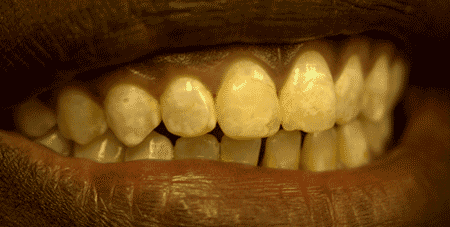UNDERSTANDING FLUOROSIS

Fluorosis, also called dental fluorosis is a condition that changes the appearance of tooth enamel in young children as a result of being exposed to too much fluoride. Children are only at risk for fluorosis while their permanent teeth are still forming. Adults and children older than 8 do not get fluorosis.
Fluorosis is the accumulation of excess fluoride in the bones and teeth. The fluoride is taken in when a child drinks water or eats food that is cooked in water with an excess of 1 part per million of fluoride. It causes permanent discoloration of teeth and when severe, can even cause a change in the tooth structure. The teeth can either be chalky white, light brown or dark brown, sometimes appearing as pits or grooves on the teeth.
Fluorosis is fast becoming a common problem in Kenya because of increased use of borehole water. Volcanic soil tends to have high levels of fluoride and groundwater which filters through it dissolves the mineral. The level of fluoride in water can be tested by companies like the Water Resource Management Authority. (WRMA). However, its not all borehole water.
In addition, excess fluoride may be consumed through toothpaste, drinking water, and fortified foods.
Symptoms
Fluorosis is a painless cosmetic condition. If a child has developed fluorosis, the appearance of the tooth enamel will change, usually becoming stained with white “splotches” or ‘streaking’.
The majorities of cases are mild and do not permanently damage teeth, and severe cases of fluorosis are not common.However, signs of severe fluorosis include:
- Brown spots on tooth enamel
- Pitting of the enamel?
- Permanent damage to the tooth enamel
Causes
Fluorosis is caused by high levels of fluoride. Fluoride is a naturally-occurring mineral that has been shown to help prevent cavities. Fluoride is typically found in toothpaste and mouthwash and is added to public drinking water sources in many places around the world. This practice, called water fluoridation, is considered safe and effective.
Children younger than 8, especially toddlers, tend to ingest more fluoride than older children and adults because they are prone to swallowing toothpaste when they brush. Fluoride in toothpaste and mouth rinse is very concentrated. Over time, swallowing toothpaste or mouth rinse adds to a child’s intake of fluoride and can cause fluorosis to develop.
Diagnosis
The discoloration from fluorosis is usually very mild; parents and caregivers may not notice it until a child’s dentist, pediatrician, or another trained healthcare provider (such as a school nurse) mentions it.
Regular dental checkups, ideally started by the time a child has their first birthday, can help promote good dental health and can help identify conditions like fluorosis or dental cavities early.
Treatment
Most cases of fluorosis are mild and do not need treatment. In more severe cases, whitening of the teeth, veneers, or other cosmetic dentistry techniques can be used to correct any permanent discoloration.
Once a child reaches the age of 8 they are no longer at risk for developing fluorosis. Prior to that time, parents and caregivers can help prevent fluorosis by:
- Using only a small amount of toothpaste on a child’s toothbrush
- Supervising children while they brush to make sure they are spitting out, not swallowing, toothpaste or mouth rinses that have fluoride
- Keeping toothpaste and mouth rinse out of reach of children
- Finding out more about the water fluoridation practice in their community
In Conclusion
Most cases of fluorosis are mild, not painful, and don’t cause any permanent damage to a child’s teeth. If severe fluorosis occurs, it can usually be treated through a number of cosmetic dentistry techniques such as whitening or veneers. Parents and caregivers can help prevent fluorosis by supervising children, especially toddlers, while they brush their teeth and make sure children start having regular dental check-ups by the time they’re a year old. Again, it’s also important to know your water source as in some countries some water sources are known to have heavy quantities of fluoride.
